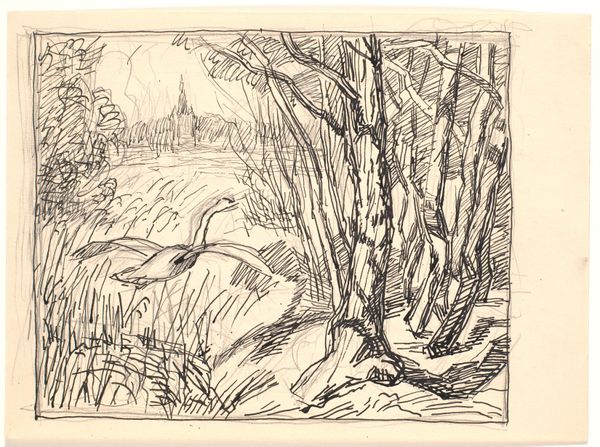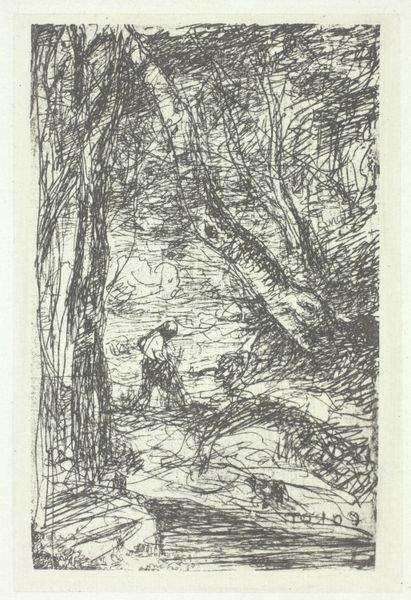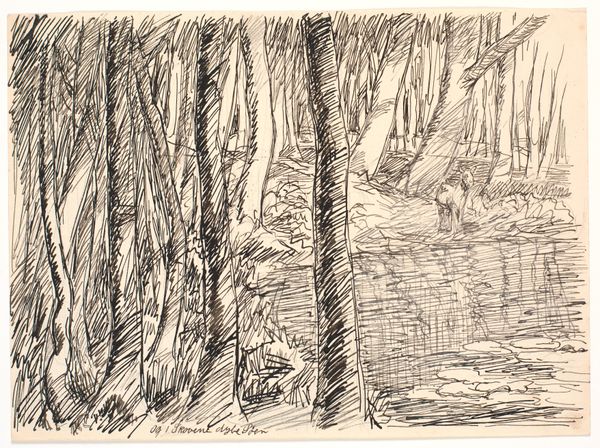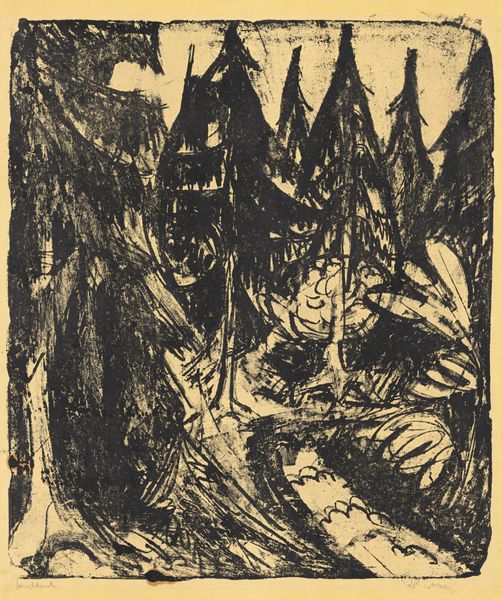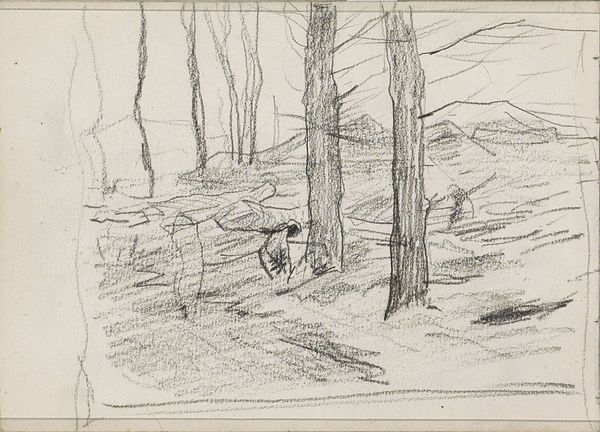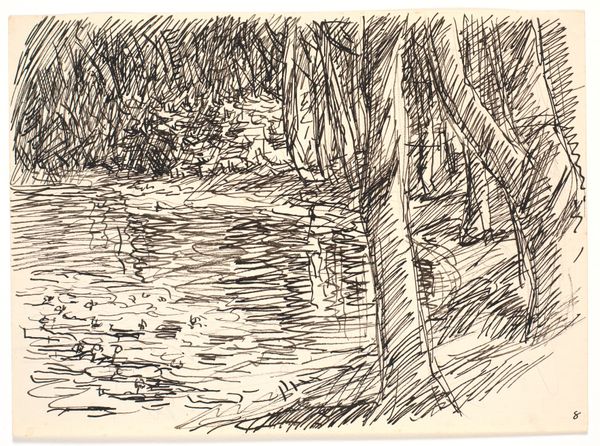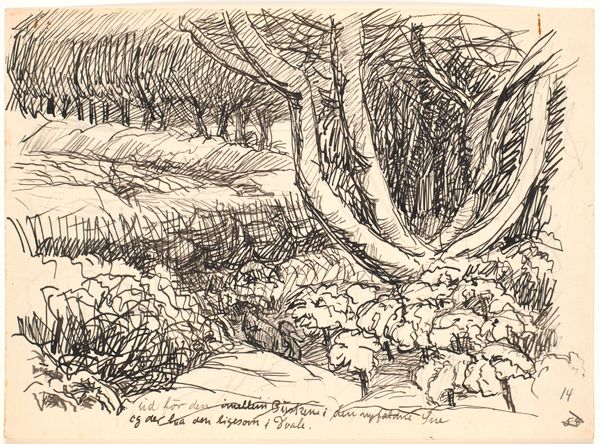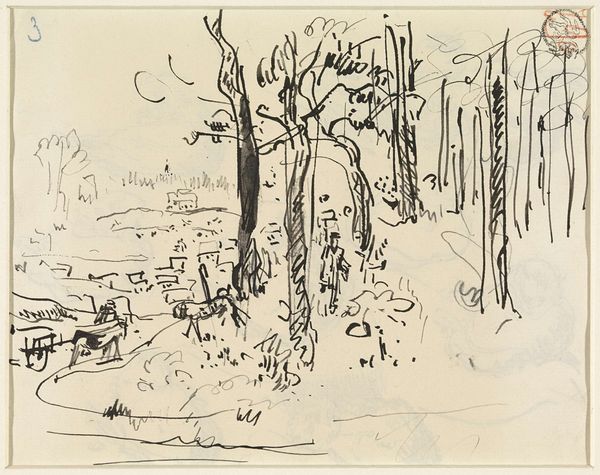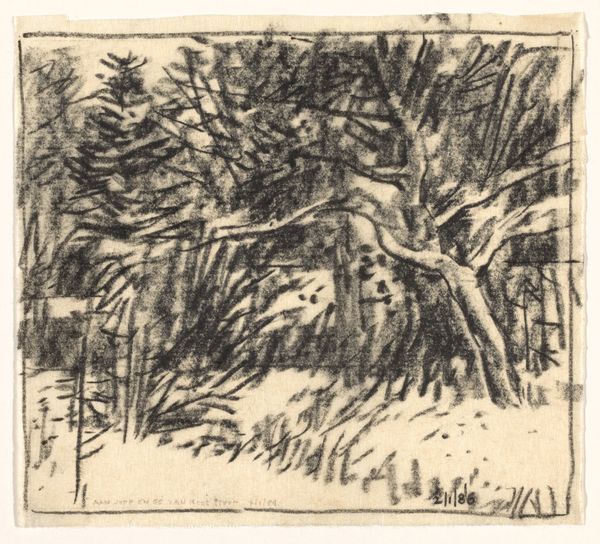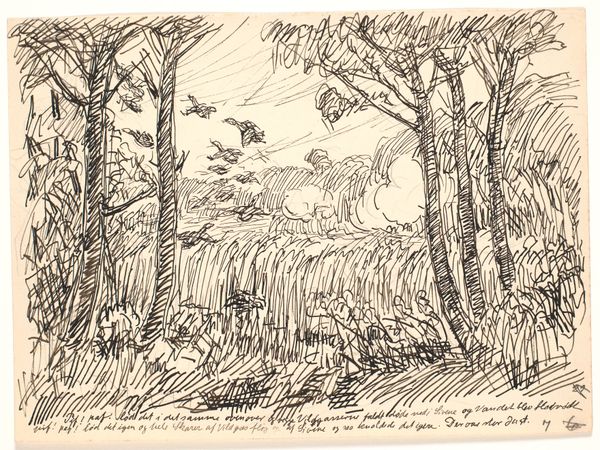
drawing, print, paper, ink, pen, frottage
drawing
pen drawing
impressionism
landscape
paper
ink
pen
frottage
Dimensions: 270 × 211 mm
Copyright: Public Domain
Editor: This drawing, “Wooded Landscape with Vagabond” by Théophile Alexandre Steinlen, is rendered in pen and ink on paper. It feels so immediate and raw with these dense, scratchy lines. What historical narratives might be embedded in such a seemingly simple landscape? Curator: It’s tempting to read this as a straightforward pastoral scene, but remember, Steinlen was deeply engaged with social issues. What if we view this "vagabond" not as a picturesque figure, but as a symptom of urban displacement and economic hardship that was so visible in the margins of late 19th-century Paris? How might his portrayal challenge idealized notions of rural life? Editor: So you're suggesting it’s not just about the landscape, but the people the landscape excludes or marginalizes? The stark black and white of the drawing really underscores that sense of contrast and maybe even alienation. Curator: Exactly. Consider the historical context: rapid industrialization, urbanization, and growing class disparities. Steinlen frequently depicted the lives of the working class, the poor, and the marginalized. This vagabond might represent a critique of the societal structures that lead to precarity. Do you notice how the dense, almost suffocating lines of the woods seem to close in on the figure? Editor: Yes, the woods almost feel hostile rather than inviting. He’s kind of swallowed up by it all. So the formal elements – the line work, the composition – all reinforce the social commentary? Curator: Precisely. The way the artist chooses to depict the scene actively shapes our understanding of it. It’s about examining the relationship between art and the politics of everyday life, then and now. How do contemporary landscapes also highlight societal inequalities? Editor: That’s a perspective shift I hadn't considered. I will definitely think twice now about the role art plays in reflecting societal struggles and social structures. Curator: It all makes us wonder how seemingly tranquil scenes might mask more profound stories of power, struggle, and resistance.
Comments
No comments
Be the first to comment and join the conversation on the ultimate creative platform.

